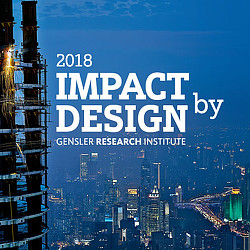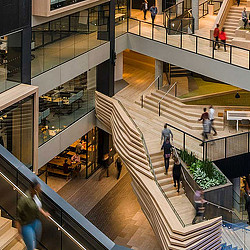Work is no longer defined by a 9-to-5 day, and the workplace experience doesn’t start or end at the desk. In fact, there will be an estimated 1.8 billion “mobile workers” in the global workforce by 2023. People are doing their jobs on commutes, at home, or in third places such as coffee shops, airports, and coworking spaces. What does this work anywhere culture mean for the traditional office and the competition for top talent?
Employers of all kinds are facing the difficult new reality that an increasing amount of people are choosing to work in many places besides the office. To keep their people engaged and to attract new talent, organizations are creating dynamic work environments. They’re investing in spaces that encourage individual, collaborative, and virtual settings, as well as amenity strategies that prioritize anywhere working. When done right, the modern workplace should empower its people to utilize the space in ways that meet their unique needs and work styles.
CHOICE AND BALANCE IS KEY
Today’s workers want a work environment that adapts with them throughout the day. They expect and demand balance, autonomy, and support for self-directed work styles. For example, the 2019 U.S. Workplace Survey (U.S. WPS) found that the openness or closed-ness of an office was irrelevant to worker satisfaction. What mattered most was the degree of flexibility offered within the workplace.
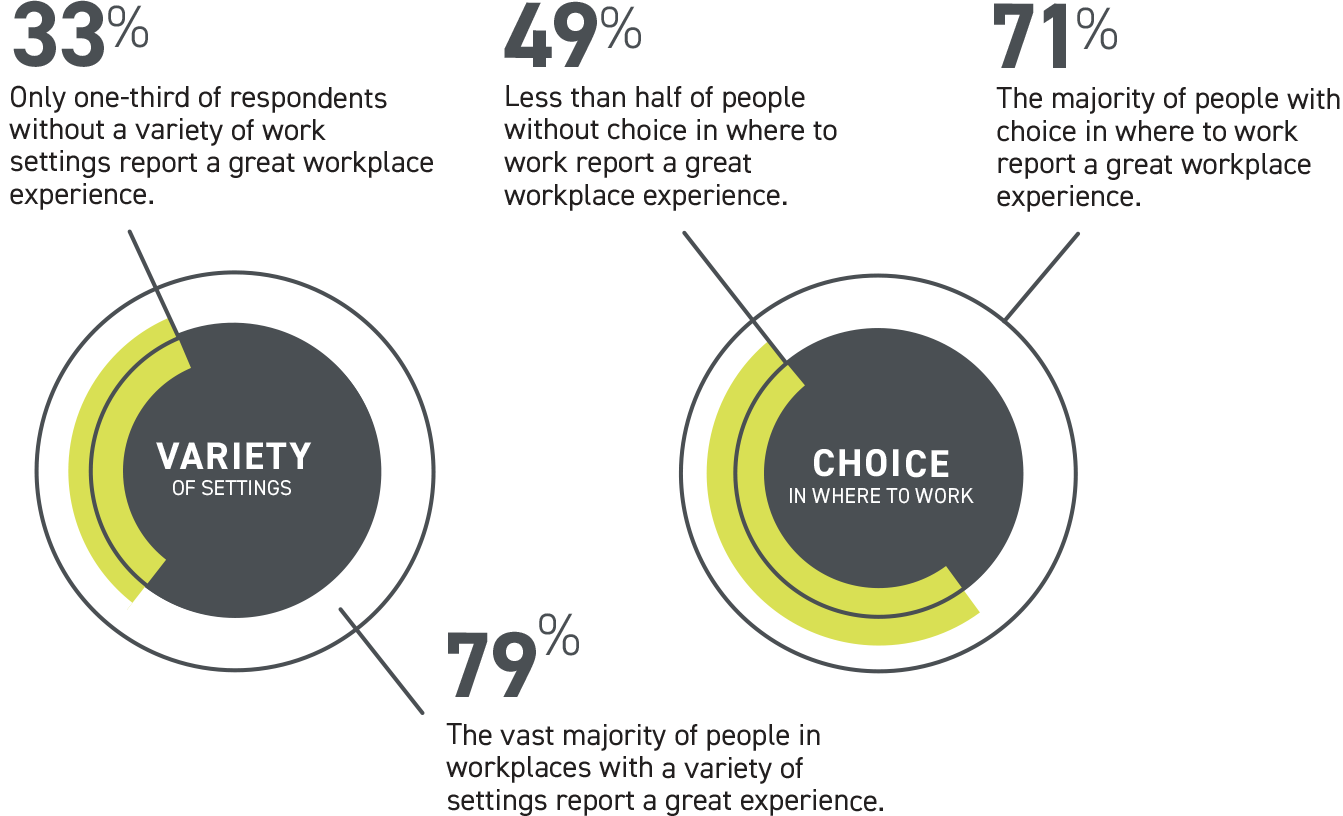
COLLABORATION IS CRUCIAL
The need to connect is a big reason people choose to come to the office, so collaboration spaces are key elements of any workplace. Most companies are realizing that in-person, face-to-face collaboration is an important part of building their culture, and a competitive advantage. Our global Workplace Surveys research shows that the right balance between focus and collaboration leads to greater innovation and higher performance overall.
As the nature of work evolves, collaboration is becoming more multidimensional and there’s a renewed focus on different spaces that bring people together — from impromptu huddle rooms, to scrum spaces, to maker labs. This doesn’t mean just adding more meeting rooms — it’s about creating a range of flexible settings that allow people to collaborate more effectively, and equipping them with the right tools to get their work done.
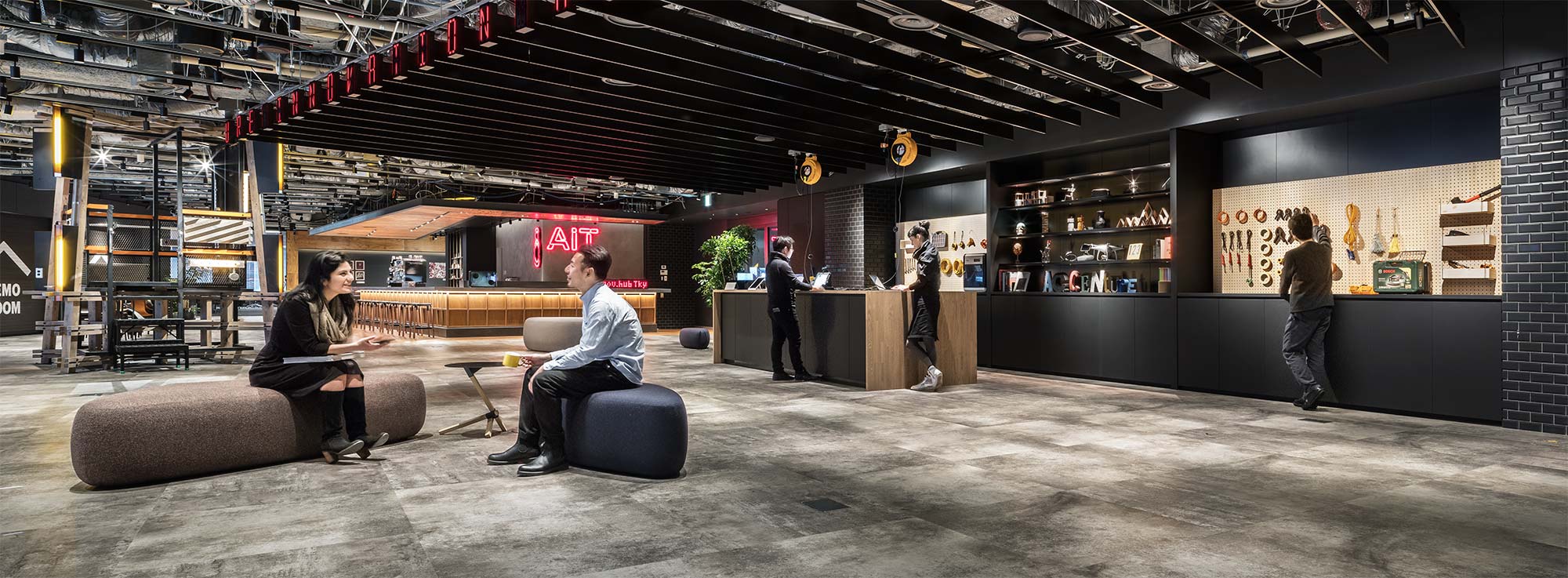
People around the world rank team building as the most important attribute of great workplaces, according to our Workplace Surveys. In some cultures, the need for connection is fundamental. For example, Latin Americans work with others more than they work alone — 43% of an average workweek, according to Gensler’s Latin America Workplace Survey. In Germany, which is dominated by shared and group offices, workers are asking for more open, collaborative spaces. Gensler’s Germany Workplace Survey found that three-quarters (74%) of respondents work in an enclosed office, but over half (61%) would prefer a more open work environment.
AMENITIES FOR ANYWHERE WORKING
One reason people enjoy working at cafes, coworking spaces, or home offices is because they’re able to choose a spot that matches their working needs, which vary from day to day. An Ernst & Young global survey of workers found that flexibility ranked among the top job perks — just behind competitive pay and benefits. Organizations can mimic this anywhere working variety by adding various amenities in the workplace. The best amenities are ones that optimize work (as opposed to spaces that separate people from their work), such as work cafes, quiet/focus zones, and innovation hubs. To compel people to come into the workplace, spaces and amenities should be curated to match people’s needs throughout the day.
In fact, our insights show that people consistently expect the workplace to match their real-life experiences. Instead of being stuck in one environment all day, some workers might prefer to enter phone booths or pods for focus work, and then return to a more open space once they’re back in discovery mode. Our Gensler Experience Index research suggests that single-use spaces are giving way to multimodal spaces where people can do multiple activities and have multiple experiences, such as a work cafe that doubles as a place to socialize and network or relax and focus. Not only do these choices allow employees to match their workspace with the nature of their work, they also provide a sense of autonomy, which can be a powerful strategy for improving worker satisfaction and retention.
3 WORK ANYWHERE SOLUTIONS IN THE WORKPLACE

FUSION AT&T, MEXICO CITY
Following a merger with two of the largest telecom companies in Mexico, AT&T Mexico needed a new headquarters to integrate 3,500 staff members from seven locations, with four generations under one roof. Dubbed “Project Fusion,” the 320,000-square-foot space features collaborative, social spaces, and amenities to build stronger connections between colleagues while fostering experimentation. With 100% free-address, unassigned seating, workers can work anywhere within the building to suit their tasks and needs.
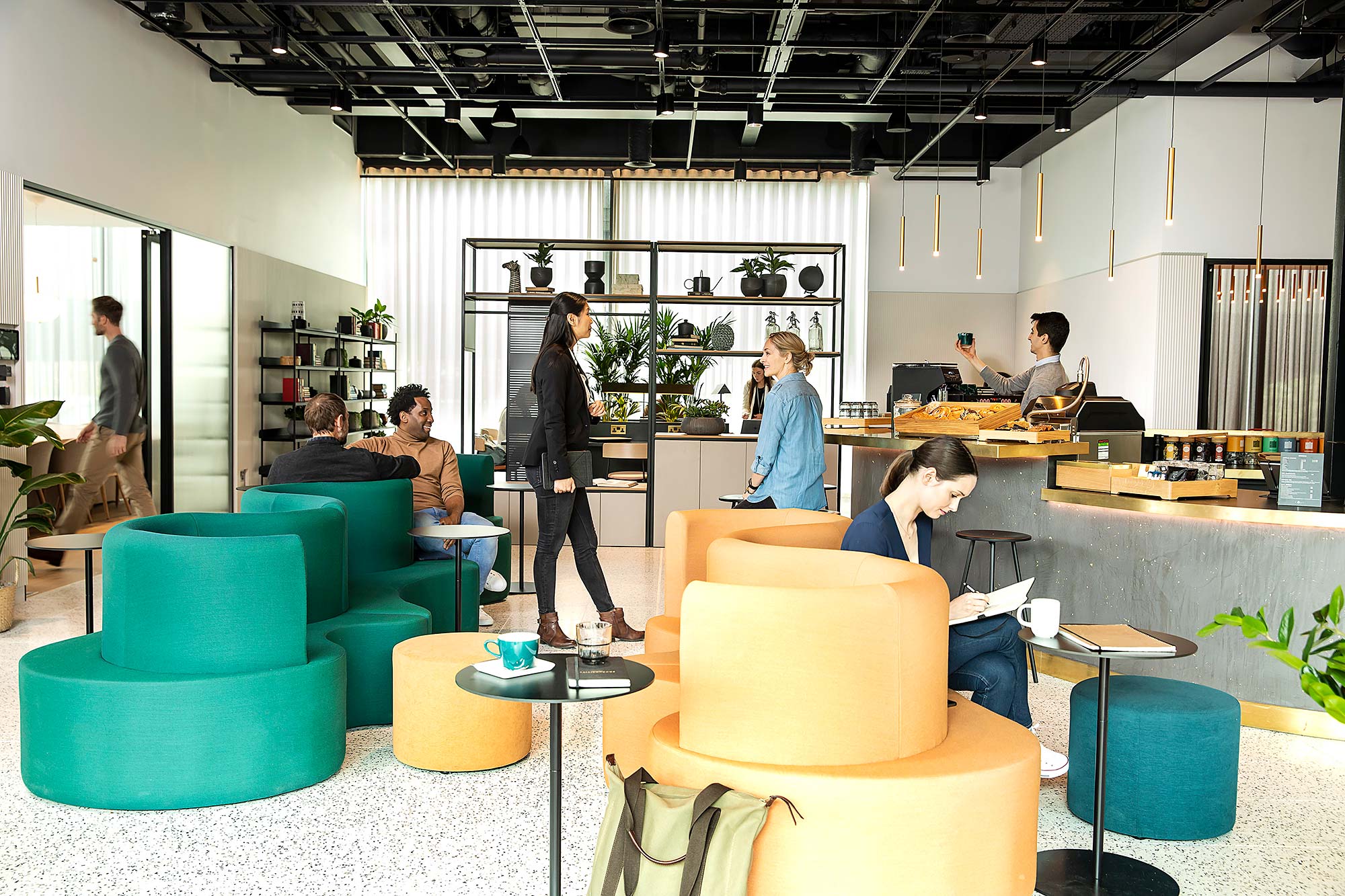
STOREY CLUB by BRITISH LAND, LONDON
The latest addition to Storey, British Land’s flexible workspace brand, Storey Club provides flexible and customizable office space for businesses employing between 20 and 70 people, providing them with the flexibility to brand and adjust their own space, while not having to commit to a long-term lease. The space includes places to work, network, dine, and create, including a 24/7 café, a music room, a kitchen area, and an “urban retreat” to entertain clients and staff.
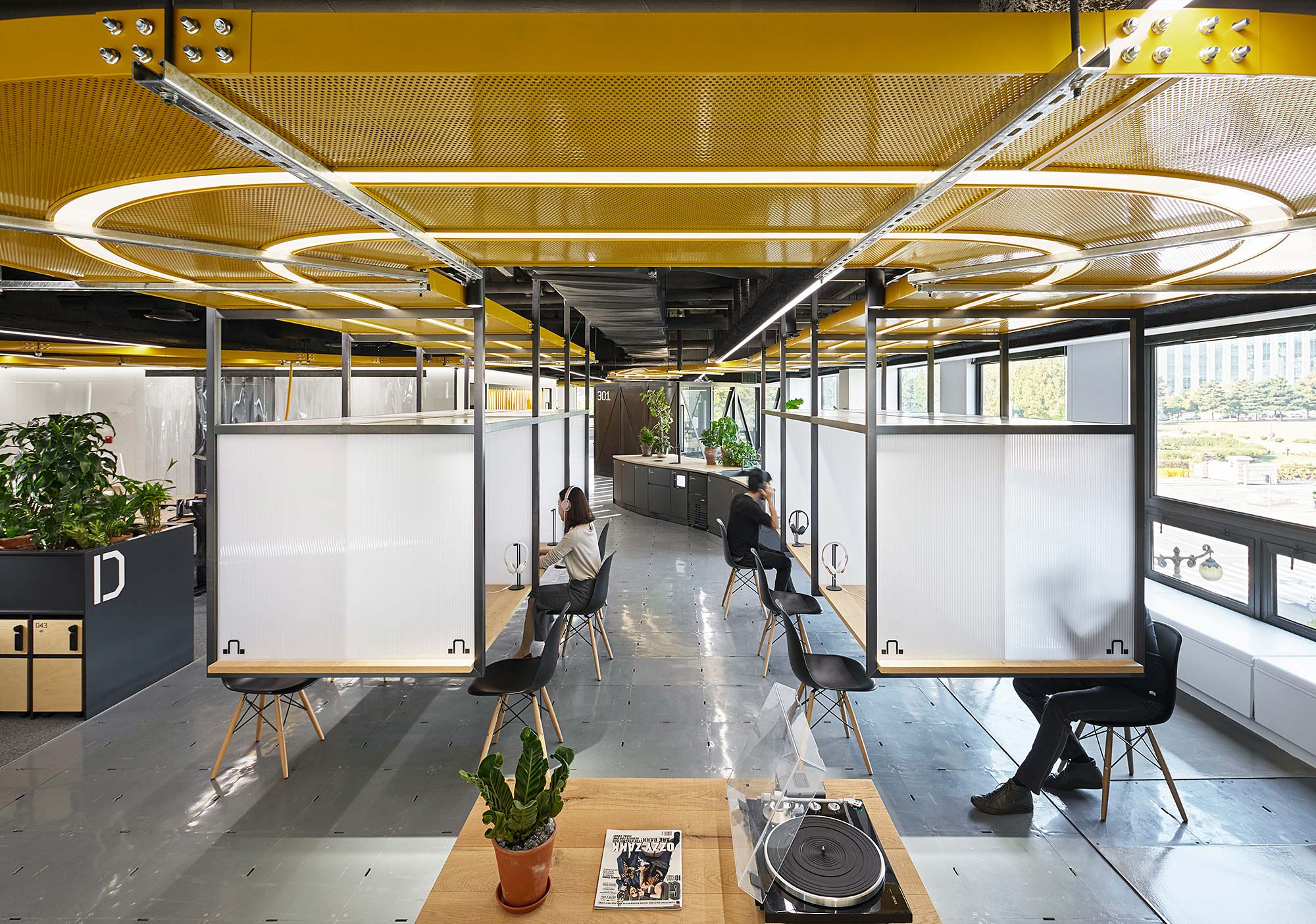
DIGITAL HYUNDAI CARD PIXEL FACTORY, SEOUL, SOUTH KOREA
Hyundai Card’s Pixel Factory is a new work environment designed to help the company attract, retain, and optimize talent needed to deliver digital-focused design innovation to customers. A flexible kit of parts with a diversity of spaces to suit different needs encourages staff to self-choose how and where they work. Overhead, a conveyor belt provides infrastructure that supports alternative settings for co-creation, focus work, and experimentation.
COWORKING ADDS VALUE AS AN ALTERNATIVE WORK SETTING
Coworking spaces are becoming a high-value amenity to spur casual collisions and offer variety. And coworking’s rapid growth attests to the global demand for alternative work settings: the Global Coworking Unconference Conference forecasts that the number of global coworking spaces will grow from over 14,000 in 2017 to just over 30,000 in 2022. But coworking should complement, rather than replace, the workplace. Gensler’s 2019 U.S. Workplace Survey found that when large companies offer workers the option to use coworking, these spaces are associated with a better work experience and higher performance, but are less effective if used more than one day a week.
As work extends beyond traditional settings, we need to continually reinvent the workplace to create spaces for anywhere working that allow people to choose the settings that are most appropriate for the task at hand and foster the meaningful human connections that they crave.
